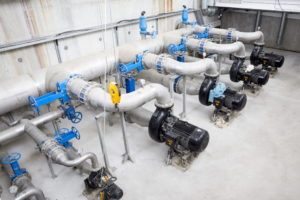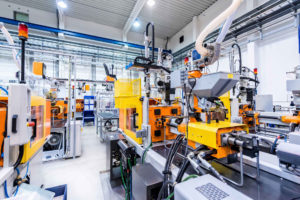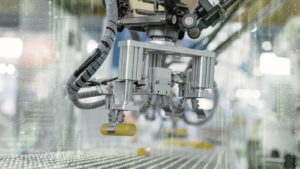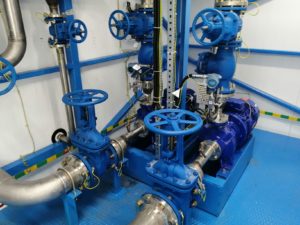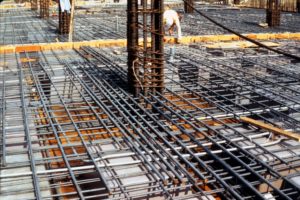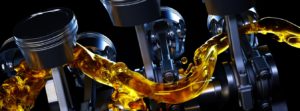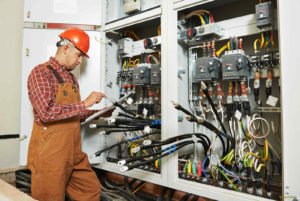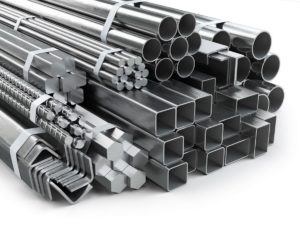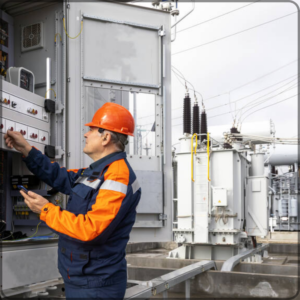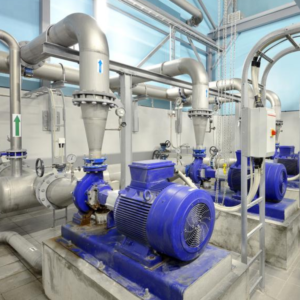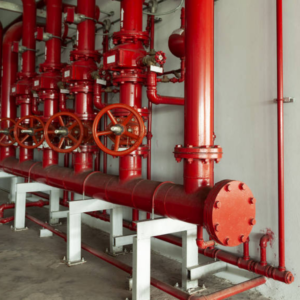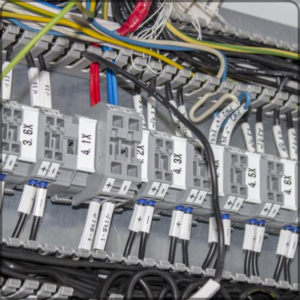
Electro Coagulation
Electrocoagulation wastewater treatment was first proposed in England in 1889. Then, a patent was obtained in the USA in 1909 on the treatment of wastewater by electrocoagulation using iron and aluminum electrodes.
The purification of drinking water by large-scale electrocoagulation was first implemented in the USA in 1946.
One of the most important factors in an electrochemical treatment process is the type of electrode used. Generally, aluminum (Al+3) and iron (Fe+3 or Fe+2) electrodes are used in the electrocoagulation process. During the process operation, these electrodes react in wastewater and metal hydroxide compounds such as Al(OH)3, Fe(OH)3 and Fe(OH)3 are formed.
These metal hydroxides adsorb different pollution parameters in the wastewater environment and allow it to precipitate. In this way, pollutants are removed from the wastewater.
Pollutants in the wastewater stream are removed by chemically and chemically bonding to collidal substances formed by chemical/pre-precipitation or abrasion of electrodes. These pollutants are then removed from the system by electroflotation/precipitation and filtration. Thus, instead of adding coagulation agents to the system from outside as in conventional coagulation processes, these substances are produced within the system.
Electrocoagulation method is used in drinking water treatment and recently in the treatment of paper, pulp, metal, mine, food, oil, textile, detergent industry wastewater.
Application Areas of Electrocoagulation Process
• Treatment of wastewater containing oil and grease
• Treatment of dye, textile and food industry wastewater
• Treatment of galvanized industrial wastewater and petrochemical industry wastewater
• Paper and pulp industry
• Restaurant wastewater treatment
• Treatment of leachate containing organic matter
• Pretreatment of membrane technologies such as reverse osmosis
• Preconditioning of boiler feed water with removal of silica, hardness, AKM etc.
• Removal of kaolin, bentonite and very fine particles in water suspensions
• Sludge dewatering and heavy metal removal from wastewater
• Treatment of drinking and utility water
• Chlorine and bacteria removal before discharge or reuse of water
• Process washing and rinsing waters
• Biological oxygen demand (BOD), phosphate and nitrogen removal
• Removal of complex organics
• Breaking of oil-water emulsion
Electrocoagulation System Advantage
a) Electrocoagulation is more effective than conventional coagulation in stabilizing and removing small colloidal particles.
b) Less and more stable sludge is formed in electrocoagulation.
c) Electrocoagulation equipment is easy to use and operate.
d) There is no need to add chemicals in electrocoagulation. Therefore, it is easier to operate and maintain.
e) The sludge formed exhibits a more dewaterable structure.
f) Initial investment cost is quite low compared to alternative technologies.
g) Many pollutants are removed with a single process.
MBR Membrane Bioreactor
What is MBR System?
Membrane bioreactors (MBR) used for wastewater treatment have been used in developed and developing countries at an increasing rate in the last 10 years. It is predicted that many conventional wastewater treatment plants will convert their technologies to MBRs in the coming years, and as a result, final settling ponds will disappear. MBRs are biological processes in suspension growth mode in which purified water and biomass are physically separated by membrane equipment.
Membrane bioreactors (MBR) are the development of classical activated sludge systems. It is a combination of biological reactors and membrane technology. After biological treatment, separation is carried out by using ultrafiltration (UF) or microfiltration (MF) membranes instead of a settling pool.
Membrane bioreactor type (MBR) wastewater treatment plants use a new wastewater treatment technology consisting of a combination of a membrane ultrafilter and an aerobic biological treatment reactor.
In cases where the MBR technique is used, in addition to the high treatment efficiency, there is no need for a settling pool in biological treatment, and the aeration basin can be designed as one third of the size that should be in the conventional method, thus saving over 70% in the total settlement and construction area.
Advantages of Membrane Bioreactors
• Can operate at lower hydraulic residence time (HRT): MBRs can operate with biological suspended solids (MLSS) concentration of 12000-15000 mg/L
• No need for final settling basin
• Can be operated at high sludge ages
• Less sludge formation
• Higher nitrification performance is observed:
• The removal performance of toxic organic compounds increases:
• System performance is independent of sludge settling.
• Output AKM concentration is too low
• Lower output BOD and COD concentration
• Very high performance physical disinfection:
Usage Areas of MBR System;
• Advanced treatment of domestic and industrial wastewater
• Especially in cases where discharge limits to water basins are in question.
• Treatment of highly polluted waters
• Obtaining irrigation water from wastewater and recycling projects
• Projects where the settlement area is insufficient for conventional methods
• Projects where the wastewater treatment plant is insufficient in capacity increases
• Recovery of wastewater in processes with high water consumption
Automation Systems
Waste water treatment plants are systems that are not easy to control in terms of both process and equipment redundancy. Controlling all the flow in the treatment plant and leaving the equipment to be used manually by the operator may ultimately lead to faulty situations. For these reasons, making automation applications in waste water treatment plants in order to catch up with the developing technology minimizes human errors. Facilities that do not use automation systems remain extremely primitive in today’s conditions.
Automation systems allow the facility to be operated from a single point, as well as protecting the equipment in undesirable situations such as overload and phase loss, and in cases such as blockage and jamming, it has a very important place in terms of both equipment and worker health.
Automation systems are required in order for water and wastewater treatment plants to carry out the water process without any problems, to intervene in the system remotely and to be instantly informed about the changes on the system.
Thanks to SCADA (Supervisory Control And Data Acquisition) Remote Control and Monitoring systems, all data in the facility (tank and pool levels, operating status of equipment, etc.) can be monitored. Apart from this, all equipment in the facility can be operated individually and in automatic mode in harmony with each other. If necessary, it can make changes in the system settings with the remote connection feature in case the parameters change.
Automation applications also prevent equipment from operating in faulty conditions. In this way, it is ensured that the equipment works with a longer life. In addition, with these systems, it ensures that the malfunctions and problems that occur in the facility area are followed and that they are informed in case of an emergency.
Perhaps the most valuable benefit of the Scada system is that it can inform the relevant persons via e-mail or text message about the situations that prevent the operation of the facility or that may cause an accident.
The most important step before the preparation of automation software and Scada in treatment plants is the preparation of the automation scenario. The automation scenario should be prepared by experienced and expert people in the processes in practice.
In addition to the automation scenario, it is very important that Scada interfaces are user-friendly and allow you to see all equipment from a single screen rather than unnecessary pop-ups. The interface should be as realistic as possible, malfunctions and warnings should be adjusted to attract the attention of the operator.
Wastewater Treatment Plant Operation
No matter how perfectly constructed a treatment plant is, if it is not operated by experts, it can not serve the purpose, it can also cause economic losses and environmental damage.
For this reason, the training of the personnel who will operate the completed facility and the undertaking of the entire operating responsibility of the facility by expert companies are among the issues that have been emphasized in recent years.
In order for wastewater treatment systems to be efficient, they must be operated consciously. Failure to carry out the appropriate operation will result in the failure to meet the discharge limits, as well as the loss of investment, energy, chemical substance, loss of workforce, reduction in the service life of the facility and serious penal sanctions.
The operation of wastewater treatment plants, which are established at high costs, is a problem for industrial organizations due to the newness of wastewater treatment practices in our country and the scarcity of trained personnel in this field.
Zema Treatment carries out the operation of both its own facilities and those built by other organizations with its expert staff. Business personnel constantly; It is trained on issues such as the latest developments in technology, increasing operational efficiency, improving maintenance and service quality, and it is aimed to provide the highest level of facility performance.
In addition, continuous training and development contributions are provided on quality and safety systems.
• Training and orientation of the personnel related to the treatment plant,
• To provide permissible discharge limits and output quality,
• To ensure that your treatment plant operates efficiently in the long term,
• Analyzing the effluent samples of the treatment plant, which should be done regularly, and following the results,
• Detection of malfunctions that may occur in the treatment plant and taking urgent measures, reporting the necessary recommendations,
• Establishing the conditions of the legal regulations required within the framework of the Environmental Law and other regulations
OHS Measurement
under the control of the Ministry of Labor and Social Affairs;
• Lighting
• Thermal comfort
• Indoor noise
• Indoor emission measurements
• Personal exposure measurements (noise, dust, vibration measurements)
• Flammable, flammable and explosive gas measurements
It is done safely by us.
What is JAR Test?
The pilot scale treatment studies carried out during the design phase of the chemical treatment to be used in drinking water and wastewater treatment at optimum cost and efficiency are called the “Jar Test”.
It is an empirical process for calculating the coagulant, appropriate working pH value, mixing speed, mixing and settling time, doses and concentrations of chemicals to be used in the treatment process of drinking water, utility water and wastewater to be treated with the Jar test.
Coagulation (coagulation) and flocculation (flocculation) are dependent on several factors, such as temperature, turbidity, color, pH, alkalinity, mixing intensity, mixing time and characteristics of the chemical reagent used. For this reason, the most appropriate coagulant dose cannot be determined from the analyzes of the water, but can be determined by performing the jar test (Jar Test), which is called actual dosage experiments. However, if there are changes in the composition of the water coming to the treatment plant, the jar test should be done again and the amounts should be checked.
In the chemical treatment process, the first step is coagulation (Fast mixing), the second step is flocculation (Slow mixing), and the last step is settling. In the coagulation process, chemicals are added to the waste water and mixed by means of a mechanical fast mixer. The purpose of rapid mixing is to spread the chemicals homogeneously in the waste water in order to increase the flock amount. The residence time and velocity gradient were important parameters for the design of the rapid mixing unit.
Water Treatment
PUVA Treatment has been operating in the purification sector in Turkey and the world since 2005. Our company aims to “design treatment facilities with the highest quality and minimum operating cost” within the scope of the operation of the facilities related to wastewater treatment to its customers.
As PUVA Artım, to provide all kinds of technical support and consultancy services in addition to project, manufacturing and construction issues, to ensure that the process is carried out in a healthy way in obtaining the necessary permits and licenses in the Environmental Permit process,
Ensuring the requirements and continuity of the Quality Management System ISO 9001 standard,
Ensuring the requirements of the Environmental Management System ISO 14001 standard and other legal requirements,
Occupational Health and Safety ISO 45002 standard requirements, other legal requirements,
Although it is among our basic criteria, our company aims to develop continuously, to evaluate new products and technologies effectively to meet the expectations of our customers, and to grow and develop by shaping its targets according to customer expectations.
Chemical Package Treatment
It is used in the treatment of industrial waste water containing high pollution and non-biodegradable materials.
Chemical wastewater treatment systems are the most widely used systems for the treatment of industrial wastewater with high inorganic load. In these systems, various reactions are created by adding chemicals determined in jar tests made according to the pollution load and characteristics of the industrial wastewater. In this way, it is aimed to precipitate the inorganic pollutants in the wastewater and remove them from the water.
• Chemical Treatment Methods
• Chemical treatment systems; These are the treatment processes applied to change the physical state of dissolved or suspended substances in water to ensure their precipitation. In the chemical treatment process, as a result of adding chemical substances to the waste water at appropriate pH values, the substances desired to be precipitated are separated from the water in the form of sludge. Chemical treatment methods; neutralization, flocculation and coagulation.
• Neutralization: It is the process of adding acid or base in order to adjust the appropriate pH value of acidic and basic wastewater.
• Coagulation: It is the process of adding coagulant substances to the waste water at appropriate pH, and combining the colloidal and suspended solids in the waste water to form a flock.
• Flocculation: Flocculation (flocculation) is the process of combining the small particles formed by the coagulation process as a result of mixing the waste water at an appropriate speed, and forming flocs that can easily settle.
• Some Sectors in Need of Chemical Treatment
• Textile Factory Wastewater
• Paper Mill Wastewater
• Galvanizing and Coating Industries
• Oil Factory Wastewater
• Paint Factory Wastewater
• Petrochemical Industry Wastewaters
• Meat Integrated Processing Facilities
• Leather Industry Wastewater
• Wastewater of Plastic Recycling Facilities
Biological Package Treatment
Package Wastewater Treatment Plants are used for the treatment of domestic or industrial wastewater generated in small and medium-sized settlements. Our Package Wastewater Treatment Plants are designed according to the SBR (Sequential Batch Activated Sludge) System; filling, aeration, settling and discharge stages are carried out sequentially in a single reactor. Package treatment is basically a mobile treatment plant that is applied to the place where the wastewater treatment plant will be produced as modular in portable sizes and installed.
Continuous type Package Wastewater Treatment Systems are a treatment process that is especially suitable for large flow rates. The treatment continues continuously in the form of aeration and precipitation in the package treatment by being fed continuously with the wastewater coming to the biological package treatment.
Continuous type Package Wastewater Treatment Systems, on the other hand, are treatment systems in which aeration and sedimentation periods are in separate tanks. As long as the wastewater comes, the treatment works actively.
Today, the most common application for the treatment of domestic wastewater originating from small settlements is biological package treatment systems.
Package treatment systems; It is the ideal solution for treating the wastewater of cooperatives, hotels, motels, camps, mass housing, lodgings, military units, campuses, farms, summer sites, rest camps, construction sites, factories, hospitals, schools, restaurants, organized industrial zones and towns.
Compared to other treatment systems, it does not need extensive and independent facilities. It works in a flexible and modular structure by being applied in a single volume and in areas that can be expressed in square meters.
Package treatment plant is manufactured from steel material (St-37) and is epoxy painted. The installations in contact with water are PVC and corrosion does not occur.
Reasons for Preferring Package Treatment
– Easy setup
– Requires very small footprint
– Provides high purification efficiency
– Fully automatic operation
– Automation and remote access
– Expandable capacity
– Ability to work at full and half capacity
– Odorless and noiseless operation
– Provides minimal maintenance
The air pressed from the blower in the ventilation section is distributed homogeneously into the pool with the help of diffusers.
In this way, the oxygen required for the formation of activated sludge is supplied. In addition, by providing a complete mixture in this section, it is ensured that the formed bacterial flocs do not precipitate.
Microorganisms ensure that organic substances are not oxidized by using the oxygen in it, thanks to the distribution of the air supplied by the blower to the aeration tank with diffusers at equal intervals.
Microorganisms in the form of suspended solids settle to the bottom of the tank under suitable conditions and form a sludge layer. The slurry, which is taken from the top of the settling section, can be chlorinated and discharged to the receiving environment by giving it to the chlorine contact section.

Conventional Treatment
Biological treatment is based on the principle of removing organic pollutants from wastewater by using them as a source of nutrients and energy by microorganisms.
Wastewater treatment is the physical, chemical and biological treatment processes applied in order to regain some or all of the physical, chemical bacteriological properties lost by water as a result of various uses, and/or to make the natural physical, chemical, bacteriological and ecological properties of the receiving environment intact.
The most common method used in biological treatment is activated sludge systems. Biological processes are used to convert the biodegraded and dissolved organic materials in wastewater into biodegradable and inorganic flocs to settle them in the settling pond. In many cases, biological processes, defined as second-stage processes, are run in conjunction with physical and chemical processes.
Whereas first-stage treatment (pre-settlement) is effective in separating precipitated solids, biological processes are effective in removing colloidal or dissolved organic compounds.
Biological Treatment Processes Biological treatment processes can be classified as aerobic and anaerobic treatment. Aerobic purification is the purification processes carried out in the presence of air.
*Aerobic treatment applications; Activated Sludge, Biofilm, Stabilization Pools, Aerated Lagoons. The most common aerobic biological treatment application is the Activated Sludge Process.
*Anaerobic treatment, on the other hand, is the treatment process carried out in airless environments. Its applications are Continuous Mix Reactors, Anaerobic Filters and Fluidized Bed systems.
*Activated Sludge processes; It consists of Pre-Sedimentation Pools, Aeration Pools, Final Settlement Pools and Disinfection Unit.
The disinfection process is; It is the process of eliminating bacteria and viruses in the wastewater treatment plant’s effluent before it is given to the receiving environment.
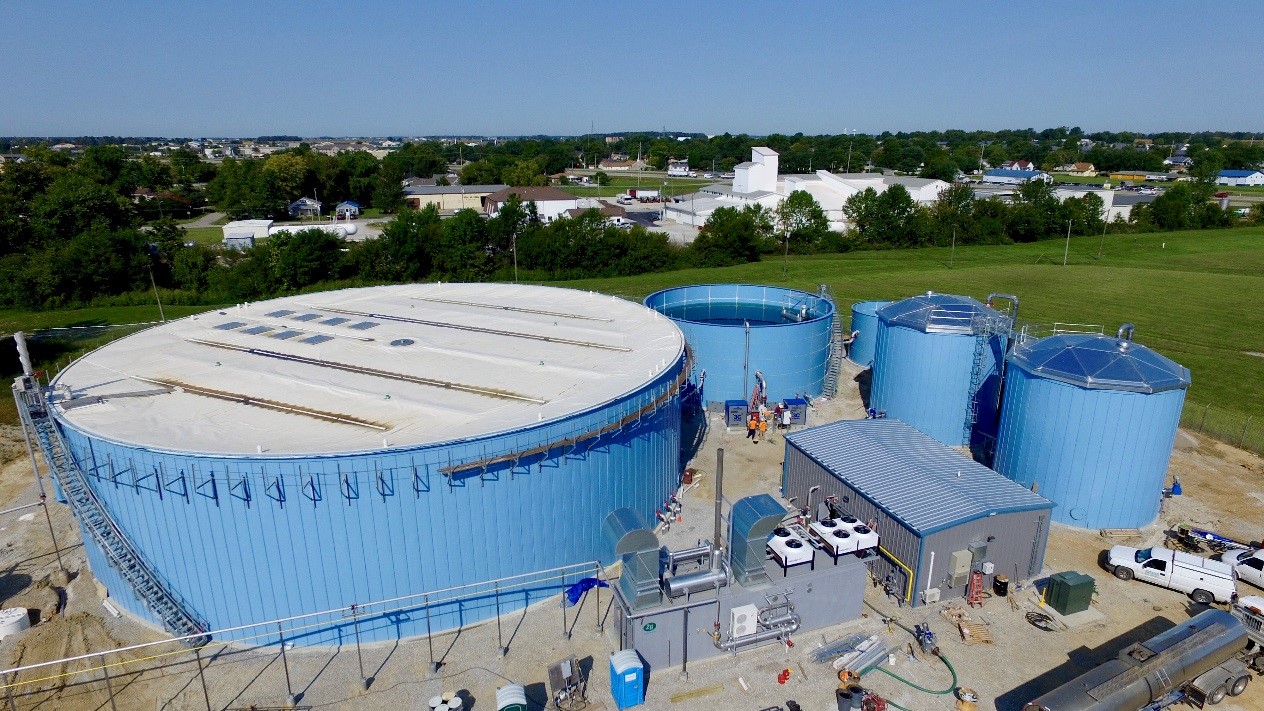
Technical service
Our technical service unit primarily provides services to our facilities that we have designed and to other companies in the sector in need in line with the demands.
The Technical Service unit consists of a professional team with sufficient knowledge and equipment. In addition to avoiding problems in the facilities, ensuring the stable operation of wastewater treatment plants and clean water treatment systems, it strives to conclude any problems that may arise with a 100% solution as soon as possible. You can get a solution by reaching all the materials and equipment you may need 24/7 from our technical service unit.



